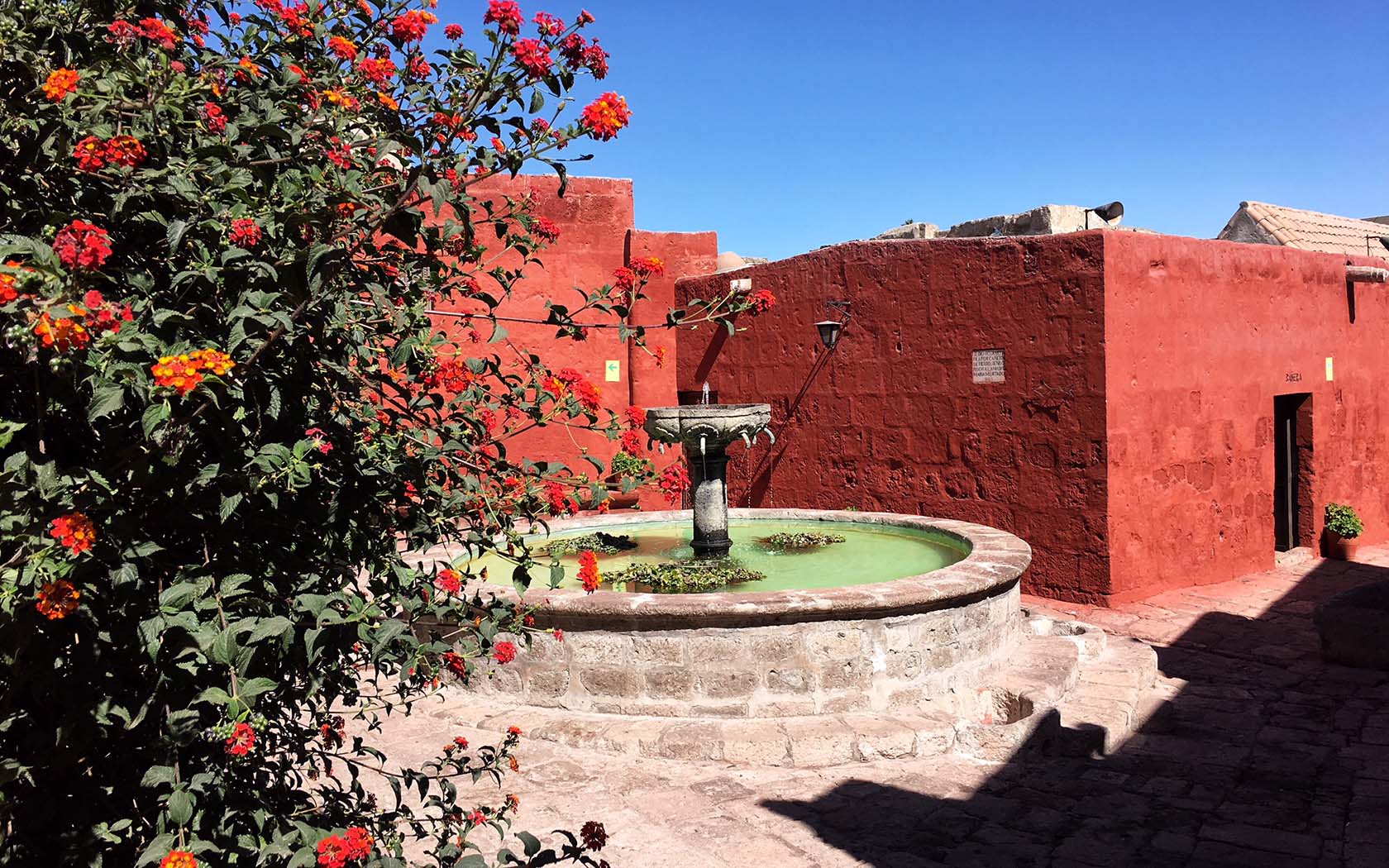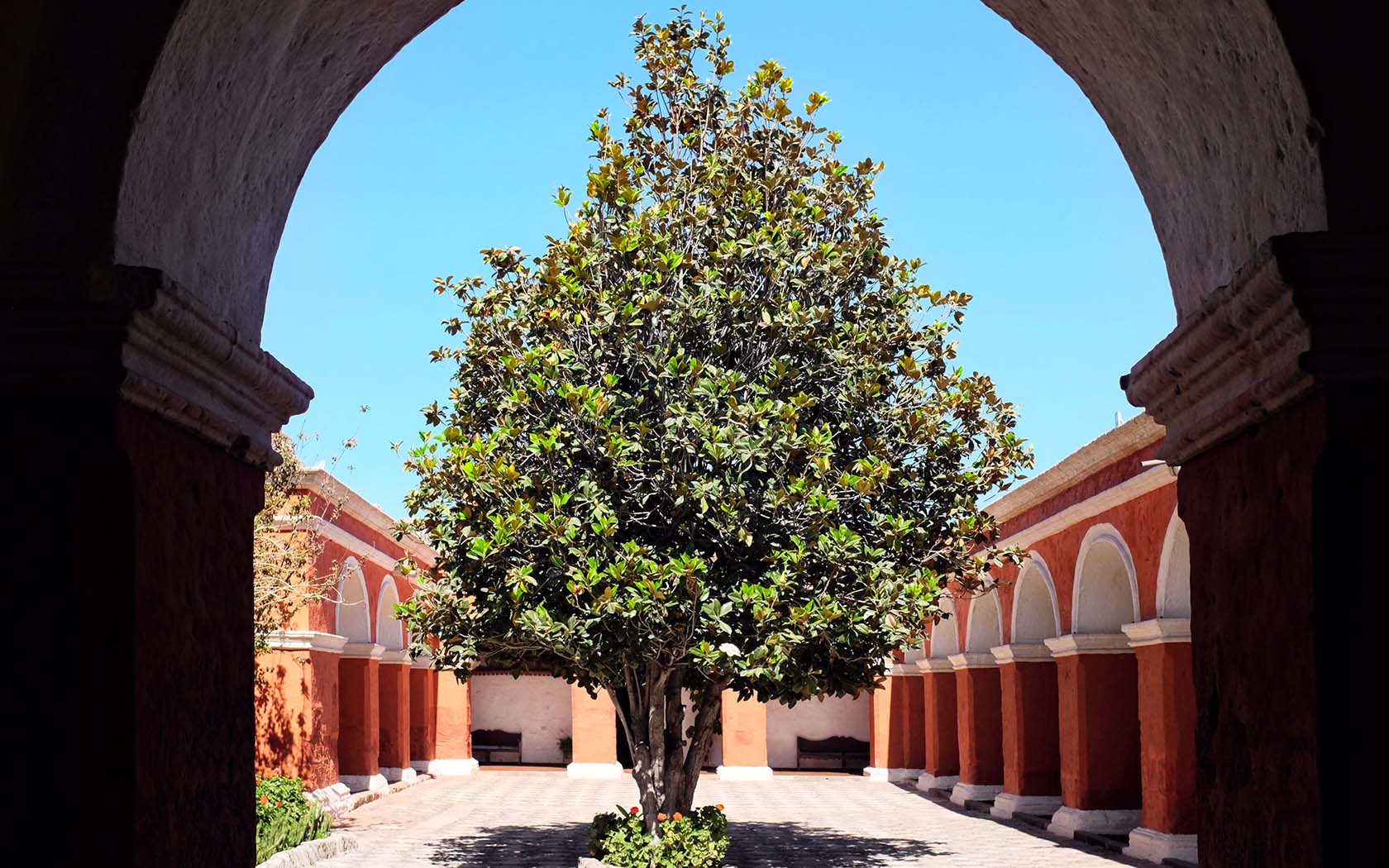Inside Santa Catalina, Peru’s Brightest Attraction

Taryn is AWOL's founding editor. She previously edited Beat Magazine…
A sign overhead says SILENCIO, and there, inside the pocket of the Santa Catalina Monastery, it is quiet. Very quiet. Except for the walls. The walls are quite, er, loud.
Most surfaces of the white sillar stone buildings that make up the monastery have been coated with one of two paint shades: a vibrant azure blue or a deep burnt coral. And with the cloistered buildings unfolding over a massive 20,000 square metres, that’s a whole lot of paint.


Santa Catalina is a verified city-within-a-city, cut off from surrounding downtown Arequipa – Peru’s second largest city – by high walls. A maze of twisting alleys, stone staircases, well-kept courtyards, flowering plants, and religious relics, it’s the kind of place where hours disappear as you explore its many cavities.
As religious buildings go, it’s a spectacle, with a fascinating history to match.
The Santa Catalina Monastery was founded in 1579 by well-off widow Maria de Guzman shortly after Arequipa was settled. As the city grew, so did the monastery, eventually taking up close to an entire city block.

At the time, it was tradition for families to send their second-born son or daughter to undertake a life of religious service. At Santa Catalina, though, this came at a price. The Dominican nuns who wanted to reside there had to pay a dowry to enter and, as such, it became a haven for children of the elite, despite the expectation that nuns were to renounce the material world.
Between the 16th and 18th centuries, the monastery was known for its absurd wealth and, at its peak, it housed over 450 people, though only a third were nuns; the rest were servants and staff.

But in 1871, the Pope sent Sister Josefa Cadena, a strict Dominican nun, to Peru, where she quickly reformed the wayward worshippers. The party was well and truly over, and the stricter rules meant only the truly devoted remained. The population of the monastery waned and massive earthquakes that destroyed parts of the property in 1958 and 1960 didn’t help.
In 1970, after 400 years of being largely closed off from the modern world, the once-wealthy monastery was finally opened to the public to help pay for things like electricity and running water. And, boy, does the public love it.

On our visit, the entry point was thick with crowds. But, after we pay our local guide – a must to shed some light on the storied history above – the hoards thin out as we wander. In what feels like a large adobe labyrinth, there are plenty of quiet corners for contemplation. We explore living quarters, kitchens and common areas, and our memory cards fill with pictures.
Incredibly enough, Santa Catalina is still home to around 20 nuns, but we can’t cross paths – they tend to their daily duties in the closed-off northern quarter of the complex, away from the hundreds of tourists who walk through their home with cameras hoisted high.
[related_articles]59092,50114[/related_articles]Right before we leave, we climb a steep staircase onto a roof and see the full scale of the convent stretch out beneath us, the ice-capped Chachani mountain standing sentry over us in the distance. For a moment, I can feel the devotion and reverence, echo off those loud walls.
How To Get There
- Fly into Santiago International Airport with Qantas
- Transfer to a LATAM service to Arequipa
- From Alfredo Rodriguez Ballon International Airport, drive 8.1km (20 minutes)
- Santa Catalina Monastery, Santa Catalina 301, Arequipa
(All images: Taryn Stenvei)
Taryn is AWOL's founding editor. She previously edited Beat Magazine and has contributed to Junkee, Beat and The Brag. She has travelled to over 30 countries and countless cities, leaving plenty of evidence on her Instagram @ninettey.








